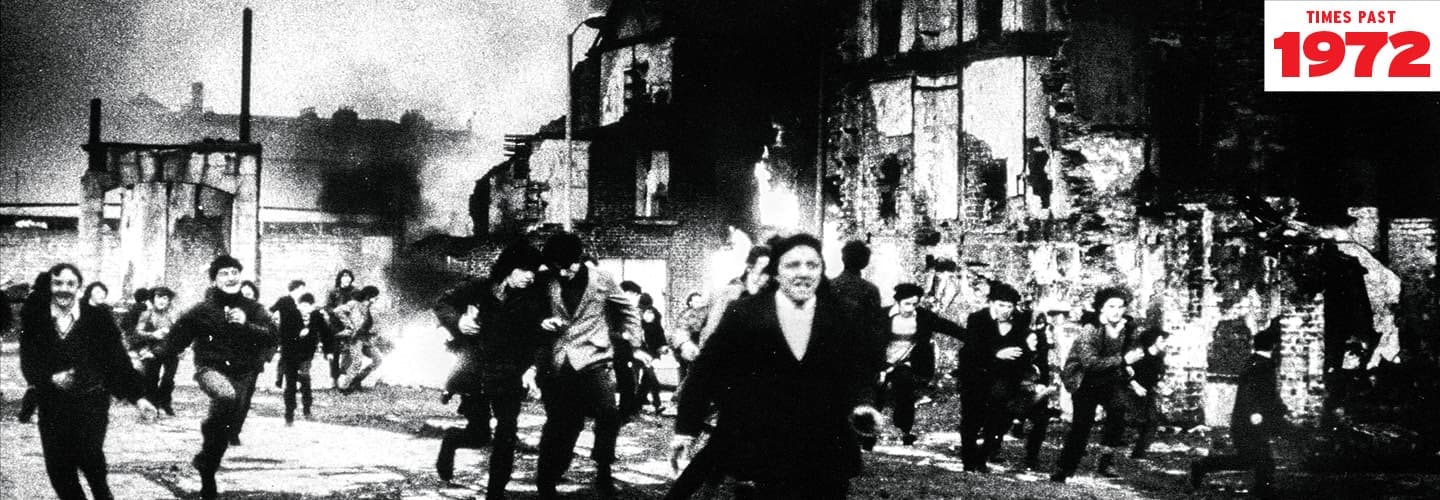Eimear O’Callaghan, a 16-year-old Catholic schoolgirl in Northern Ireland, watched the 6 o’clock news in horror. Earlier that day, January 30, 1972, thousands of demonstrators had gathered in the city of Londonderry, also called Derry, to protest for civil rights. Most of them were Catholic nationalists, and many wanted independence from the United Kingdom, a largely Protestant nation.
They were met with gunfire. British paratroopers, who were patrolling the march, shot at the protesters, killing 14 unarmed people, including seven teenagers. O’Callaghan and two of her younger brothers watched footage of the violence from their home in Belfast.
“It was just shock and terror and disbelief when we saw what had happened,” O’Callaghan, now 67, says. She recently published her diary from that year as a memoir entitled Belfast Days: A 1972 Teenage Diary. “To see the shootings, the killings, the bodies lying on the ground,” she adds, “I think it was probably the moment that we grew up.”
On January 30, 1972, Eimear O’Callaghan watched the 6 o’clock news in horror. The 16-year-old Catholic schoolgirl lived in Northern Ireland. Earlier that day, thousands of protestors had gathered in the city of Londonderry, also called Derry. They protested for civil rights. Most of those who came together were Catholic nationalists. Many of them wanted independence from the United Kingdom, a largely Protestant nation.
They were met with gunfire. British paratroopers were patrolling the march. They shot at the protesters, killing 14 unarmed people, including seven teenagers. O’Callaghan and two of her younger brothers watched footage of the violence from their home in Belfast.
“It was just shock and terror and disbelief when we saw what had happened,” O’Callaghan, now 67, says. She recently published her diary from that year as a memoir entitled Belfast Days: A 1972 Teenage Diary. “To see the shootings, the killings, the bodies lying on the ground,” she adds, “I think it was probably the moment that we grew up.”

